Texas has a larger area than any other state in the United States except Alaska. It is bigger than Illinois, Indiana, Iowa, Michigan, and Wisconsin combined. According to the 2020 census, Texas ranked second among the states in population, after California. Five cities in Texas rank among the nation’s top 15 in population. These cities are Houston, San Antonio, Dallas, Austin, and Fort Worth.
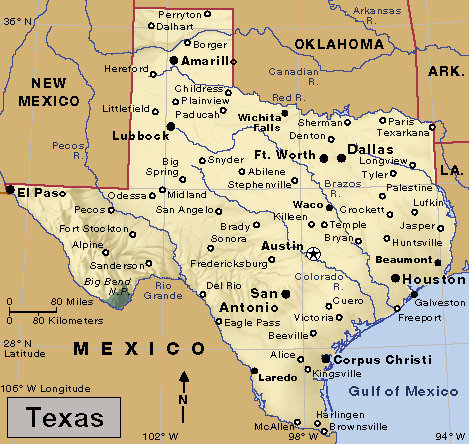
Frontier cowboys with their 10-gallon hats have long been a symbol of Texas. Cowboys still work cattle from horseback on Texas ranches. Cowboy boots and hats still make up part of the everyday dress of many Texans. However, the Texans of today are just as likely to be workers in an oil field or scientists in a laboratory as they are to be cowboys. Or they might be engineers in a chemical plant, computer operators in a bank, or musicians in a symphony orchestra. Thousands of Texans are also employed in the aerospace industry. The Lyndon B. Johnson Space Center, in Houston, serves as the headquarters for all astronaut projects of the National Aeronautics and Space Administration (NASA).
The land of Texas has helped make the state rich. Many industries, such as trade and finance, benefit from the state’s huge agricultural and mining production. Today, the state’s leading economic activities include community, social, and personal services, trade, and manufacturing. Vast plains and rolling hills provide fertile soil and rich grasslands. Texas has more farms and farmland than any other state. It has more cattle and sheep than any other state. It also leads all other states in the production and refining of petroleum.
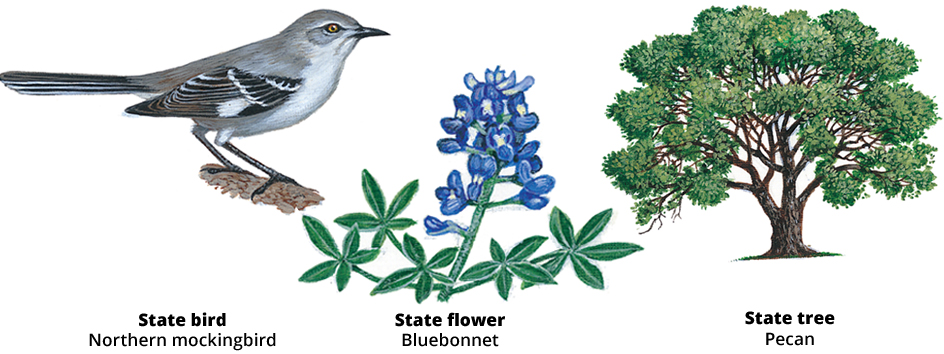
Many colorful people have played roles in Texas history. Spanish adventurers began exploring the region about 450 years ago. Texas received its name from their pronunciation of the Caddo word Tejas, meaning friends or allies. The Caddo people formed a group of united Indigenous (native) tribes in the northeastern part of the state. Peoples in other parts of present-day Texas included the Coahuiltecan, the Lipan Apache, and the Tonkawa.
Texas was part of Mexico when the first settlers from the United States arrived there in 1821. In 1836, Davy Crockett, Jim Bowie, and other heroes died at the Alamo fighting for independence from Mexico. Sam Houston led the Texans to their final victory against the Mexicans. One of his battle cries was “Remember the Alamo!” For nearly 10 years after the war with Mexico, Texas was an independent republic. After Texas became a state in 1845, the settlers fought Indigenous people for many years to protect their families and homes.
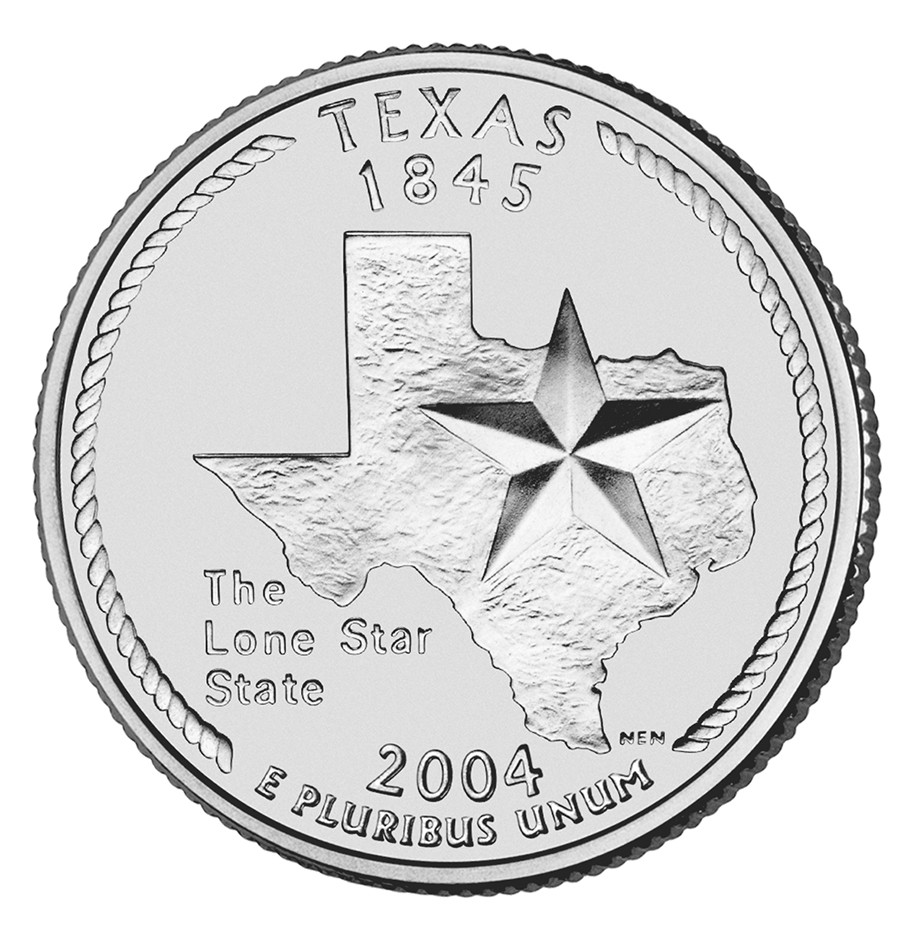
Texas is called the Lone Star State because of the single star on its flag. Through the years, the flags of six nations have flown over Texas. Besides the United States, these nations were Spain, France, Mexico, the Republic of Texas, and the Confederate States of America. Austin is the capital of Texas. Houston is the largest city.
People
Population.
The 2020 United States census reported that Texas had 29,145,505 people. The population had increased 16 percent over the 2010 figure, 25,145,561.
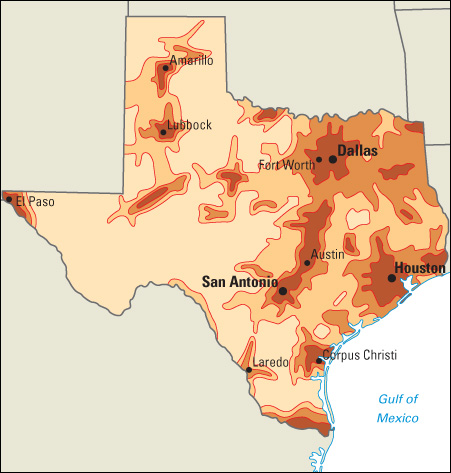
About 90 percent of Texans live in metropolitan areas (see Metropolitan area). About 65 percent live in the metropolitan areas of Austin-Round Rock-San Marcos, Dallas-Fort Worth-Arlington, Houston-Pasadena-The Woodlands, and San Antonio-New Braunfels. In all, Texas has 26 metropolitan areas. Texas has 40 cities with more than 100,000 people. Houston is the state’s largest city, followed by San Antonio, Dallas, Austin, Fort Worth, and El Paso.
About 40 percent of the people of Texas are of Hispanic origin. Only New Mexico and California have a higher percentage. Mexican Americans make up a majority of Texas’s Hispanic residents. Other large population groups include people of English, German, and Irish descent. About 12 percent of the state’s people are African Americans.
Schools.
Texas had only a few public schools when it gained independence from Mexico in 1836. The schools held classes only in Spanish. The lack of English-language instruction was considered a justification for overthrowing Mexican rule. Few public schools existed in Texas until the late 1800’s. 
The Texas Education Agency supervises the public school system. It consists of an elected State Board of Education and a commissioner of education who is appointed by the governor. Texas law requires children to attend school from age 6 to age 18. For the number of students and teachers in Texas, see Education (table: U.S. students, teachers, and school expenditures).
In 1984, Texas enacted public school reform legislation. The law revised the school finance system to provide more equity among districts. It also imposed basic skills tests for certified teachers and administrators. Also, beginning in 1985, high school students who failed a class could not participate in extracurricular activities until they improved to a passing grade. Since 2003, Texas has required high school students to pass a test in English language arts, mathematics, science, and social studies before they could graduate.
Libraries.
The Texas State Library was established in Austin in 1839 by the Republic of Texas. It is Texas’s oldest library. Texas has dozens of college and university libraries and several hundred public libraries. The Houston Public Library and Dallas Public Library have the state’s largest public library collections. The Lyndon Baines Johnson Library and Museum houses the papers and mementos of the 36th president of the United States. It is on the campus of the University of Texas in Austin. The George Bush Presidential Library and Museum is on the campus of Texas A&M University in College Station. It houses the official and personal papers of George H. W. Bush, the 41st U.S. president. The George W. Bush Presidential Center, including the presidential library and museum, is on the campus of Southern Methodist University in Dallas. It honors George W. Bush, the 43rd U.S. president.
Museums.
The Museum of Fine Arts, Houston, has collections of Italian Renaissance paintings and French Impressionist works. The Amon Carter Museum of American Art in Fort Worth features painting and sculpture of the Old West by American artist Frederic Remington. The Dallas Museum of Art has a collection of American paintings. The Kimbell Art Museum in Fort Worth displays paintings by European masters.
The Houston Museum of Natural Science includes exhibits on astronomy, chemistry, and minerals. The Witte Museum in San Antonio has exhibits on Texas wildlife and ecology. Other museums include the Texas Hall of State at Fair Park in Dallas, the Sam Houston Memorial Museum in Huntsville, and the San Antonio Museum of Art.
Visitor’s guide
Some of the most popular resort centers in Texas are on the Gulf Coast. Sandy beaches stretch along most of the coast. Many deep-sea fishing enthusiasts sail from the coastal cities of Aransas Pass, Corpus Christi, and Galveston. They catch marlin, red snapper, sailfish, and tarpon in the Gulf of Mexico.
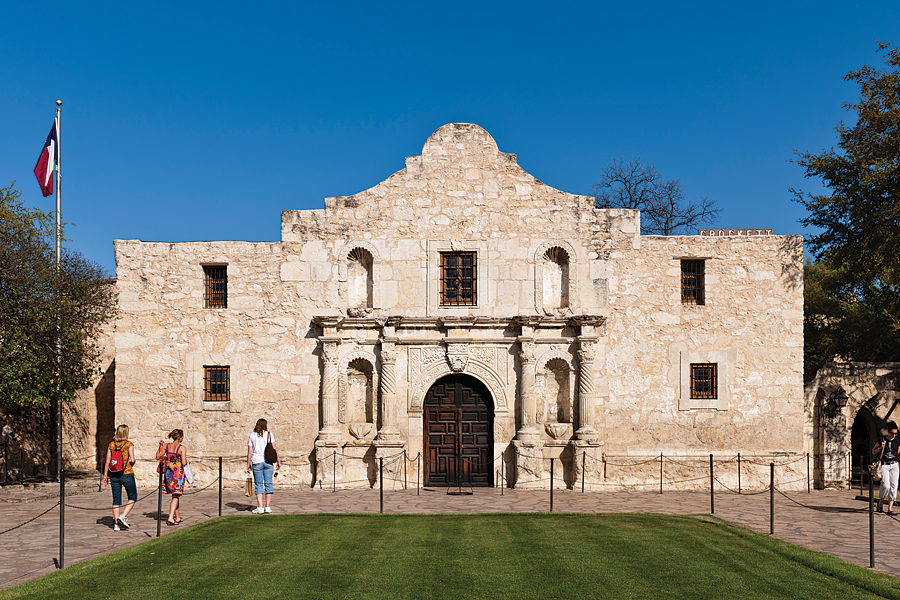
In northeast Texas, rolling timberlands provide many recreational areas. The region’s rivers and lakes offer fine fishing. Central and west Texas are popular deer-hunting sites.
Texas has more than 500 fairs, festivals, and expositions each year—more than any other state. The greatest event is probably the State Fair of Texas. The fair is held in Dallas for 24 days in September and October. About 2 million people visit yearly, making it the largest annual fair held in the United States.
Land and climate
Land regions.
Texas has five main land regions. These are, from east to west, the Gulf Coastal Plains, the Prairie Plains, the Rolling Plains, the Great Plains, and the Basin and Range Region.
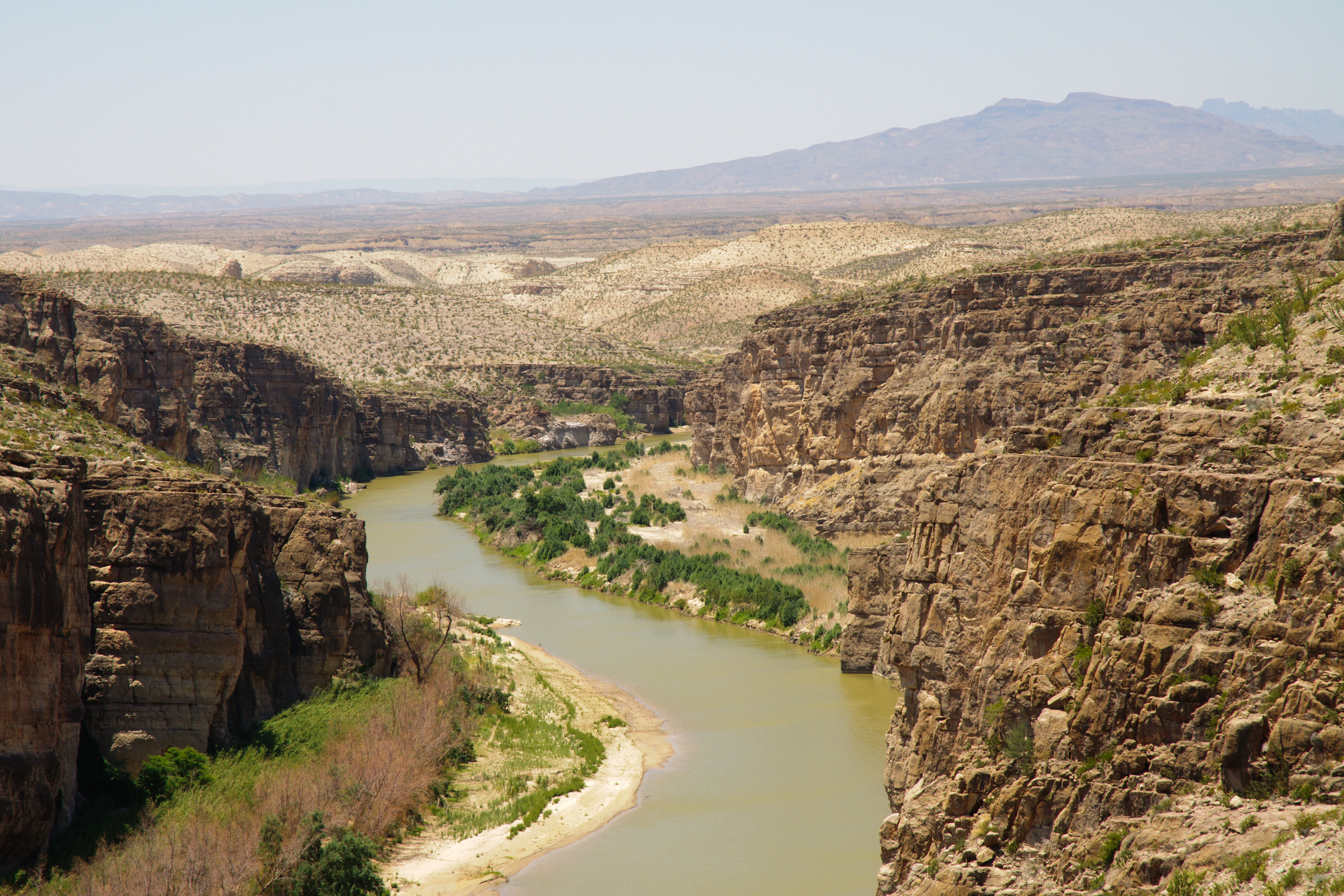
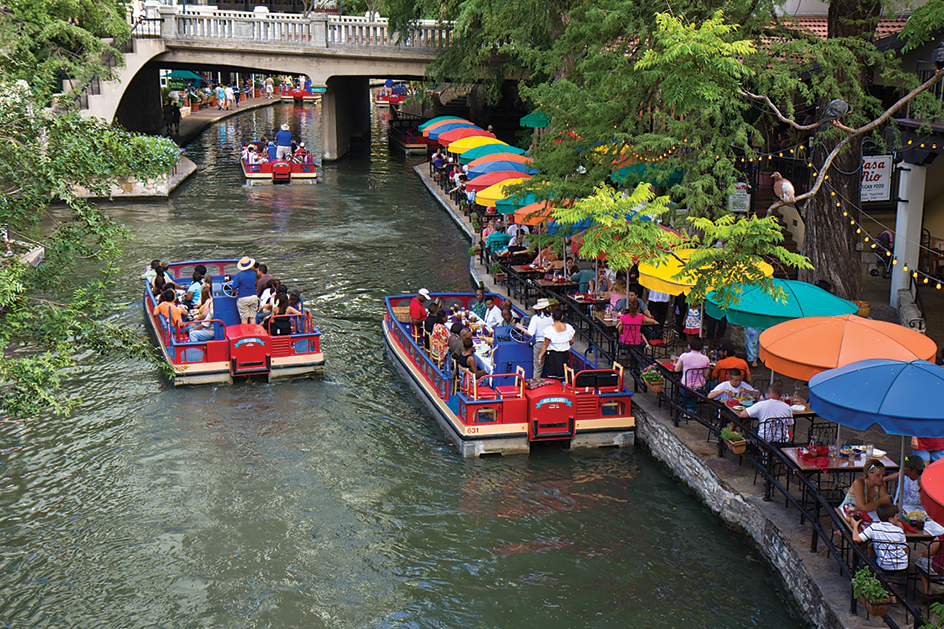
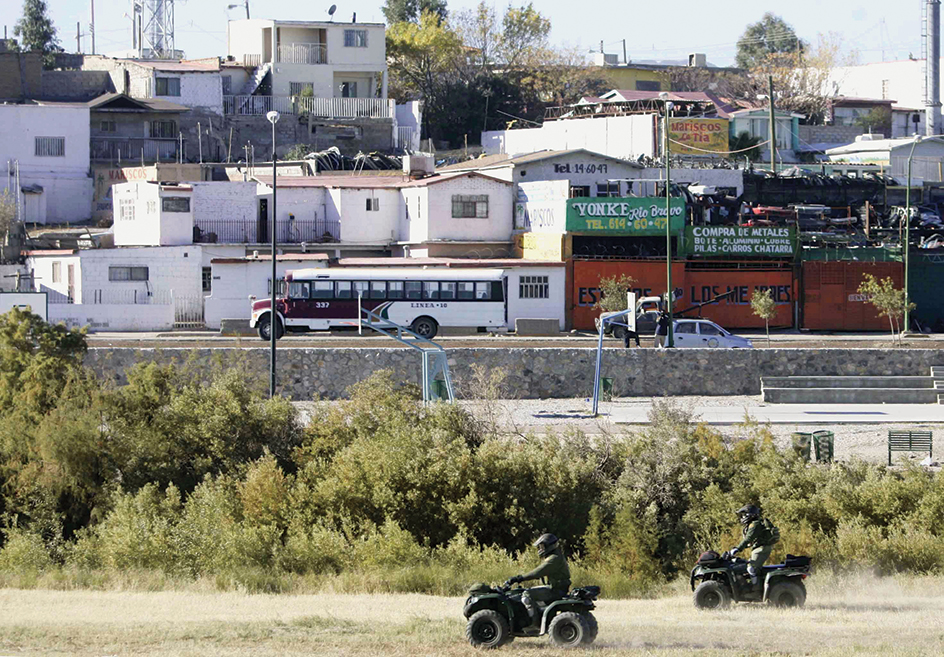


The Gulf Coastal Plains
of Texas are part of the fertile lowland that lies along the entire Gulf Coast of the United States. They range in elevation from sea level to about 300 feet (91 meters) above sea level. A subtropical region extends along a large part of the coast.
The southernmost part of the Coastal Plains consists of the fertile Rio Grande Valley. Just north of this valley lies the Middle Nueces Valley, part of the Nueces Plains. The two valleys are famous for their winter vegetables and fruits. The region along the coast from the Rio Grande Valley to Louisiana has rich soils. Cotton and several types of grain thrive in this region.
The northeastern part of the plain is a timberland. Thick forests of oak, pine, sweet gum, and other trees cover the land. This area is often called the Piney Woods. Major lumber and paper companies own most of the land. Farmers in this area raise beef and dairy cattle and poultry. The region has many large mineral deposits.
The Prairie Plains
lie west of the forest belt of the Coastal Plains. The Prairie Plains feature alternating belts of rugged hills and rolling hills. The rugged hills are covered with oak and hickory forests. The region includes the fertile Black Waxy Prairie. The prairie has rich soils for farming.
The Rolling Plains
are a hilly area west of the Prairie Plains. The area’s elevation increases as it approaches the Great Plains to the west. The region has scattered belts of fertile farmland and rich petroleum deposits.
The Great Plains
reach westward from the Prairie Plains and Rolling Plains into New Mexico. They form part of the series of treeless plains that extends northward through the western United States into Canada. The Great Plains of Texas rise from an altitude of about 700 feet (213 meters) above sea level in the east to over 4,000 feet (1,200 meters) above sea level in the west.
A large part of the Great Plains region lies within the Texas Panhandle, the part of the state that juts northward alongside New Mexico and Oklahoma. The western part of the Panhandle is called the Llano Estacado (Staked Plains) or the High Plains. This treeless grassland is a high plateau. The Llano Estacado has many irrigated cotton, grain sorghum, and wheat farms. The southern part of this area lies above an underground region called the Permian Basin. The state’s largest petroleum and natural gas deposits are in the Permian Basin.
The Edwards Plateau forms the southern part of the Great Plains. Its surface is mainly bare limestone bedrock. It is dotted with shrubs and sparse grasses. Thick grasses grow in the plateau’s river valleys and basins. In the eastern part of the plateau, the land becomes irregular, forming what is called the Texas Hill Country. More sheep and goats are raised in the Edwards Plateau than in any other part of the United States.
The Basin and Range Region,
commonly called the Trans-Pecos Region, makes up the westernmost part of Texas. It includes high, partly dry plains. The plains are crossed by spurs (extensions) of the Rocky Mountains. These spurs include, from north to south, the Guadalupe, Davis, and Chisos mountains. The peaks that do not form continuous ranges are called lost mountains. Farmers use the level sections mainly for raising cattle. Some irrigated agriculture takes place on the plains along the Rio Grande. Many beautiful mountain gorges are along the upper Rio Grande. The river forms the region’s western border. Santa Elena Canyon, in Big Bend National Park, is one of the most spectacular gorges.
Coastline.
A series of sand bars lies along the Texas coast. These sand bars enclose shallow lagoons. They help protect the coast from ocean storms and huge, destructive rushes of seawater called storm surges. Padre Island, the largest sand bar, is about 100 miles (160 kilometers) long. Other large sand bars include the islands of Galveston, Matagorda, and San Jose.
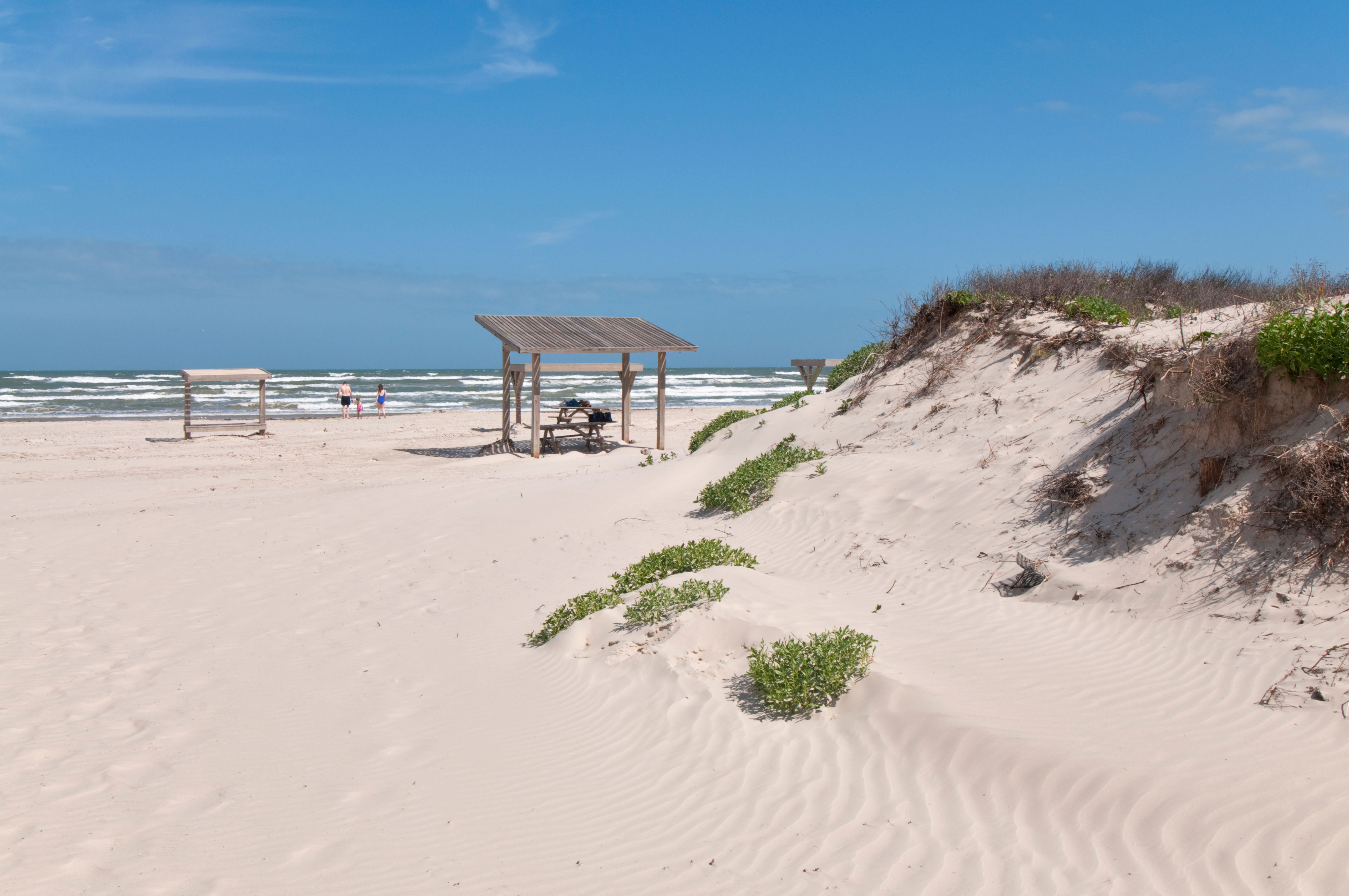
The Texas coast has 27 artificially created ports. They were once filled by silt (particles of earth) left by the many streams emptying into the Gulf of Mexico. Only small vessels could use them. By removing the silt and deepening the harbors, engineers built 12 deepwater ports and 15 ports for barges and small ships.
The general coastline of Texas is 367 miles (591 kilometers) long along the Gulf. The tidal shoreline, including bays, offshore islands, and river mouths, is 3,359 miles (5,406 kilometers) long.
Mountains.
Texas’s highest mountains rise in the Basin and Range Region. The chief ranges include the Chisos, Davis, and Guadalupe mountains. The main peak of the Guadalupe Mountains is Guadalupe Peak. It rises 8,749 feet (2,667 meters) above sea level and is the highest point in Texas.
Rivers and lakes.
The Rio Grande, Texas’s largest river, is one of the longest and most historic rivers in North America. For 1,241 miles (1,997 kilometers), it forms the boundary between the United States and Mexico (see Rio Grande). Other Texas rivers include the Brazos, Canadian, Colorado, Guadalupe, Neches, Nueces, Pecos, Red, Sabine, San Antonio, and Trinity.
Most of the state’s rivers flow in a southeastward direction into the Gulf of Mexico. But the Canadian River drains into the Arkansas River. The Pecos River flows into the Rio Grande. The Red River and its branches empty into the Mississippi River. In the dry western parts of Texas, many streams have water only after a rainstorm.
Texas has thousands of lakes that have been made or enlarged by human effort. Most of these lakes were created as part of programs for generating hydroelectric power, irrigating farmland, and storing water. The largest artificially created lake is Toledo Bend, which extends into Louisiana. The reservoir was created by Toledo Bend Dam, which crosses the Sabine River. Other artificially created lakes include Amistad, Buchanan, Falcon, Sam Rayburn, and Texoma.
Many saltwater lakes and ponds lie in the High Plains, in the Basin and Range Region, and near the mouth of the Rio Grande. The largest include La Sal Vieja, Sal del Rey, and Salt Lake.
Plant and animal life.
Forests cover about 15 percent of the state. The trees that are most valuable commercially are sweet gums, oaks, and pines. Other common trees that grow in Texas include cat’s-claw, baldcypress, elm, juniper, magnolia, mesquite, native pecan, and tupelo.
Hundreds of kinds of grasses grow in Texas. They include bluestem, buffalo grass, curly mesquite, grama, and side oats. Thousands of kinds of wildflowers grow in the state. They include daisies, goldenrod, primroses, and sunflowers. The bluebonnet is the state flower. Many varieties of cactuses grow in the dry Basin and Range Region.
Much wildlife is found in the eastern forests and on the western plains. Deer, pronghorn, and wild turkeys are the chief game animals of Texas. Other animals include armadillos, bears, coyotes, mountain lions, and wild pigs. The state’s large reptile population includes alligators, snakes, and lizards. The most common freshwater fish include bass, catfish, and sunfish. Crabs, menhaden, oysters, and shrimp thrive in the Gulf of Mexico.
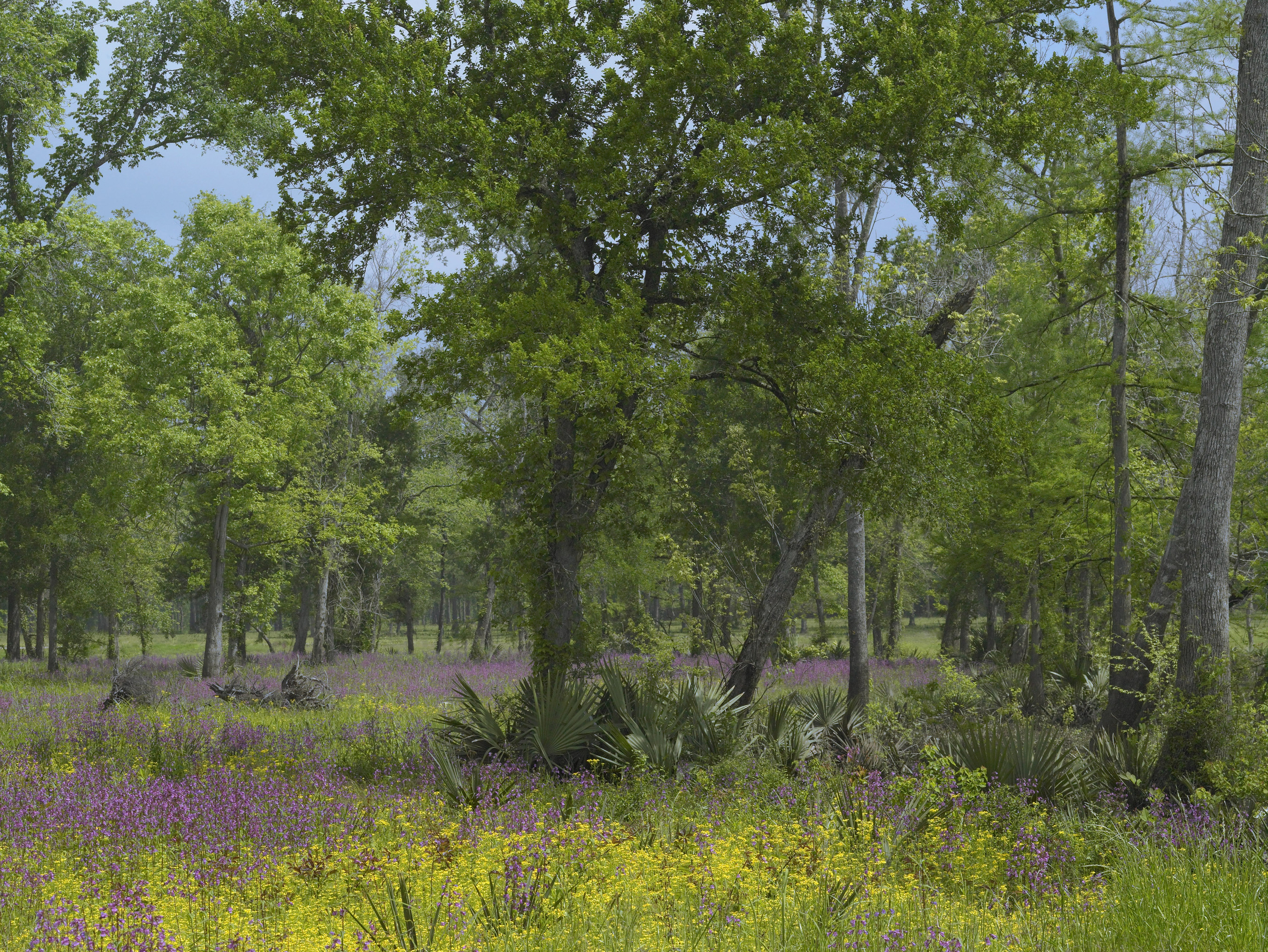
Climate
of Texas ranges from subtropical in the lower Rio Grande Valley to temperate in the northwest. The lower Rio Grande Valley is the warmest region of the state. It has an average January temperature of 61 °F (16 °C). Its average July temperature is 86 °F (30 °C). The coldest area is the Panhandle, in the northwest. It has an average January temperature of 36 °F (2 °C). Its average July reading is 79 °F (26 °C). Texas’s lowest temperature, –23 °F (–31 °C), was recorded at Tulia on Feb. 12, 1899. It was matched at Seminole on Feb. 8, 1933. The record high in the state was 120 °F (49 °C). That temperature was reached at Seymour on Aug. 12, 1936, and Monahans on June 28, 1994. 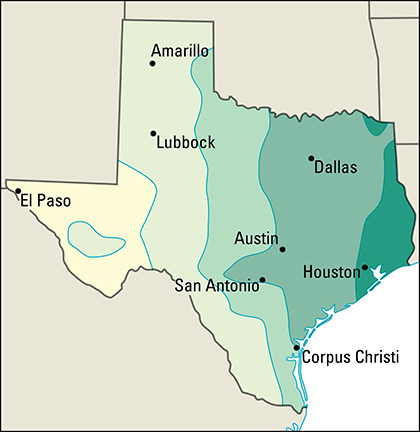
Along the Gulf of Mexico, the coast has a warm, damp climate. There, winds from the Gulf reduce the heat of summer and the cold of winter. Central Texas has a mild climate. Its weather makes it a popular resort area the year around. In the northeast, the weather is damp and cool. The northwest sometimes has long, cold winters. The west has a dry, cool climate.
Rainfall in Texas decreases from east to west. Northeastern Texas averages 47 inches (119 centimeters) of precipitation a year. Parts of west Texas average only 12 inches (30 centimeters) a year. Port Arthur, in the southeastern part of the state, gets about 50 more inches (127 centimeters) of rain a year than El Paso, in the far west. Along the coast, most of the rain falls between May and October. Texas experiences more tornado strikes than any other state. Many individual tornadoes have caused dozens of deaths.
Sleet, winds, and heavy rain from the north occasionally sweep across the state in the winter. Strong winds often blow throughout the High Plains. During periods of drought, these winds carry away the soil. Snow seldom falls in the south-central and central regions. But the High Plains have an average of more than 18 inches (46 centimeters) of snow a year.
Economy
Texas has one of the country’s largest and most diverse economies. Service industries provide the largest part of Texas’s gross domestic product. Gross domestic product is the total value of all goods and services produced in the state in a year.
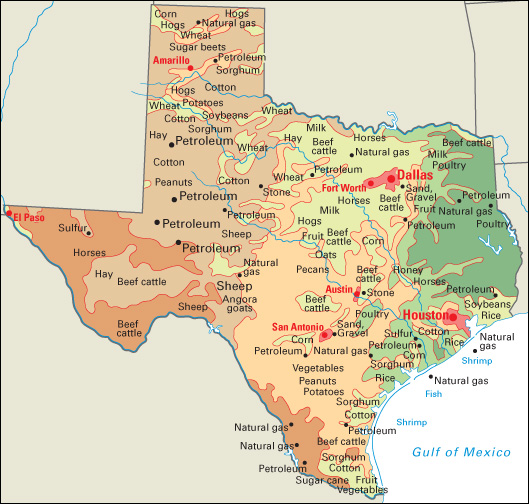
For many years, the petroleum and natural gas industries dominated the Texas economy. The condition of these industries still has a strong effect on the state’s overall economic health. But this effect has been moderated by the development of other industries. They include aircraft, chemical, electronics, food-processing, and machinery production industries. The growth of finance, trade, and other service industries has also helped to diversify the economy. The Dallas-Fort Worth and Houston areas have the headquarters of many large companies.
Natural resources.
The natural wealth of Texas includes large mineral deposits, especially petroleum and natural gas. In addition, the state has fertile soils and rich grasslands.
Minerals.
Texas is one of the world’s great petroleum storehouses. The state’s known petroleum reserves account for 40 percent of the country’s known supply. Most of the state’s petroleum reserves lie near the Odessa-Midland area in the west-central part of the state. Natural gas reserves also lie in this area, as well as in the northeast and far southern parts of the state.
Other mined resources of Texas include large sulfur deposits in the Gulf Coastal Plains and the Basin and Range Region. Underground salt deposits occur in the Gulf Coastal Plains and in western Texas. Surface deposits of salt are found in northwestern, southern, and western Texas. Layers of rock containing beds of lignite, a kind of coal, extend from Laredo to Texarkana. Iron ore occurs in the eastern part of the state.
Limestone occurs in a broad belt extending from the Red River to the Rio Grande. Gypsum deposits lie at several sites in the state. Gravel and silica sand are plentiful in many areas. The largest asphalt deposits are near Uvalde. Potash occurs in the Basin and Range Region. Molybdenum, titanium, and uranium are found in the southern and western parts of the state. Texas also has deposits of basalt, fluorite, fuller’s earth and other clays, granite, helium, lead, marble, and talc.
Soil.
Texas has hundreds of types of soil. This variety enables farmers to grow many kinds of crops. A narrow belt along the state’s Gulf Coast has marshy soils, mixed with clays. Rich soils lie along the banks of the state’s rivers. Large sections of the interior of the Gulf Coastal Plains have sand and clay soils. Rich, heavy blackland clays make up a belt in the interior of the plains. The Prairie Plains Region has soils of clays, limestone, and sands. The High Plains and the Rolling Plains have clays, clay loam, and sandy loam soils. The Basin and Range Region has rough, stony mountain soils.
Service industries
account for the largest portion of Texas’s employment and gross domestic product. Most of the service industries are concentrated in the metropolitan areas, especially the Dallas and Houston areas. 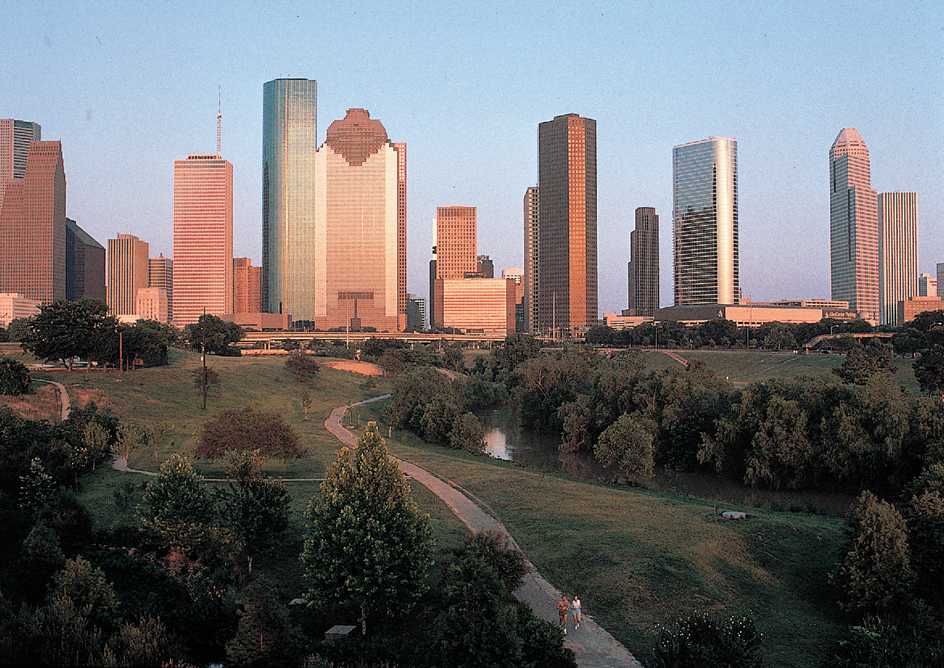
Dallas and Houston are the chief financial centers in the state. Dallas is the headquarters of the Eleventh Federal Reserve District Bank, one of the 12 federal banks established by Congress. The city also serves as the headquarters of many insurance companies.
Many of the nation’s largest wholesale petroleum distributors are headquartered in Texas. The Dallas-Fort Worth area is the home of several major retailers, including the companies that own J. C. Penney and 7-Eleven stores. Many hotel, restaurants, and retail trade establishments operate in the Austin, Dallas-Fort Worth, Houston, and San Antonio areas.
Fort Sam Houston and several United States Air Force bases are in the San Antonio area. In addition, the federal government operates the Johnson Space Center in the Houston area (see Johnson Space Center). State government offices are based in Austin, the state capital. 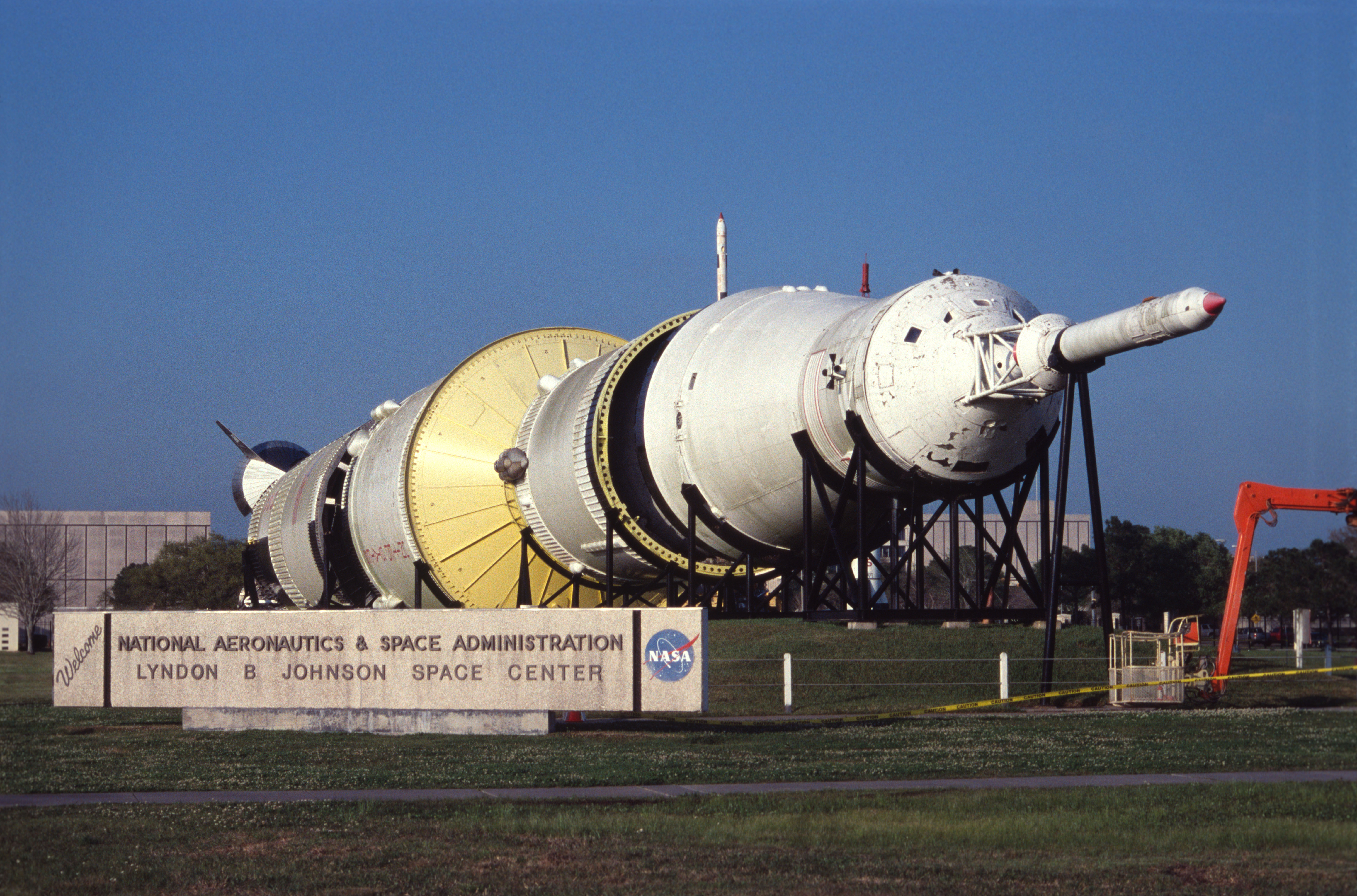
Engineering companies that service oil and gas companies are important to Texas. Trucking companies generate most of the income for the transportation sector. Pipelines transport much of the state’s oil and natural gas. Many shipping companies operate along the Gulf Coast. American Airlines and Southwest Airlines have headquarters in the state.
Manufacturing.
Texas is one of the leading manufacturing states. It employs more manufacturing workers than any state but California.
Chemicals are Texas’s leading type of manufactured product. Texas leads the United States in chemical manufacturing. Important chemical products include benzene, ethylene, fertilizers, propylene, and resins. The Texas chemical industry operates chiefly in cities along the Gulf Coast.
Computer and electronic equipment are also important manufactured products. Dallas-based Texas Instruments Incorporated is a major producer of electronic components and military communication systems. It has plants in several Texas cities. Dell Inc., a leading computer manufacturer, is based in Round Rock, near Austin.
Meat products are the most important processed food product. Meat-packing plants chiefly operate in the eastern and northern parts of the state. Baked goods, beverages, dairy products, and preserved fruits and vegetables are also important. The Dallas-Fort Worth and Houston areas have many bakeries. 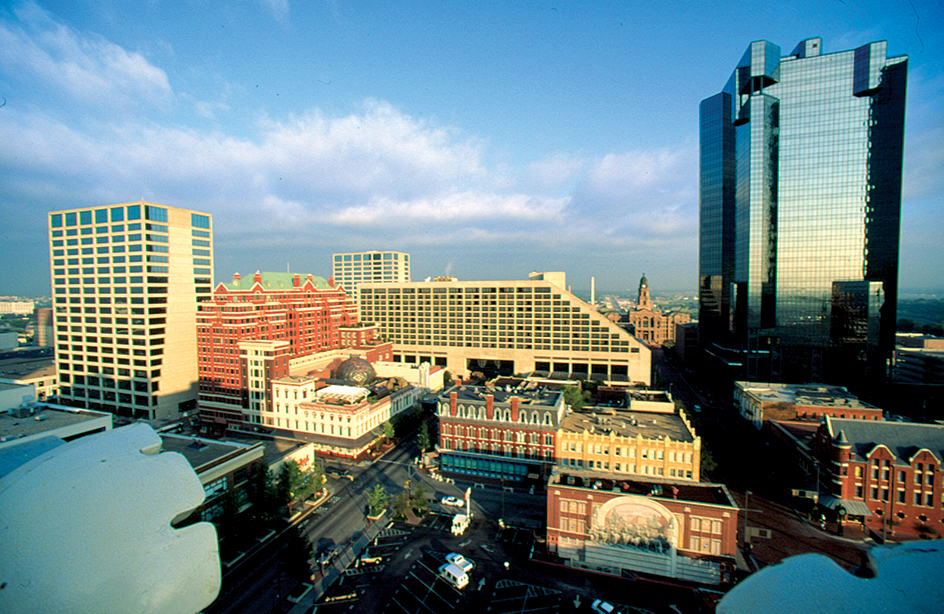
Texas ranks first among the states in oil refining. A number of petroleum refineries operate in the state. The largest refineries are along the Gulf Coast in Baytown, Beaumont, Corpus Christi, Houston, Port Arthur, Texas City, and other port cities. Exxon Mobil Corporation has its headquarters in Irving. It is one of the largest petroleum companies in the world.
Other products include fabricated metal products, machinery, and transportation equipment. Fabricated metal products are primarily made in the Dallas and Houston areas. The Austin, Dallas, and Houston areas produce refrigeration and heating equipment and machinery for the oil and gas industry. Aircraft, aircraft parts, motor vehicle parts, and trucks are manufactured in the Dallas and Fort Worth areas.
Mining.
Texas leads the states in value of mined products, largely due to oil and gas. About a third of the oil produced in the United States comes from Texas. Texas’s leading oil-producing area is a belt that runs from Hockley County to Pecos County in west Texas. This area lies above an underground region called the Permian Basin. The Permian Basin contains vast deposits of oil and gas. 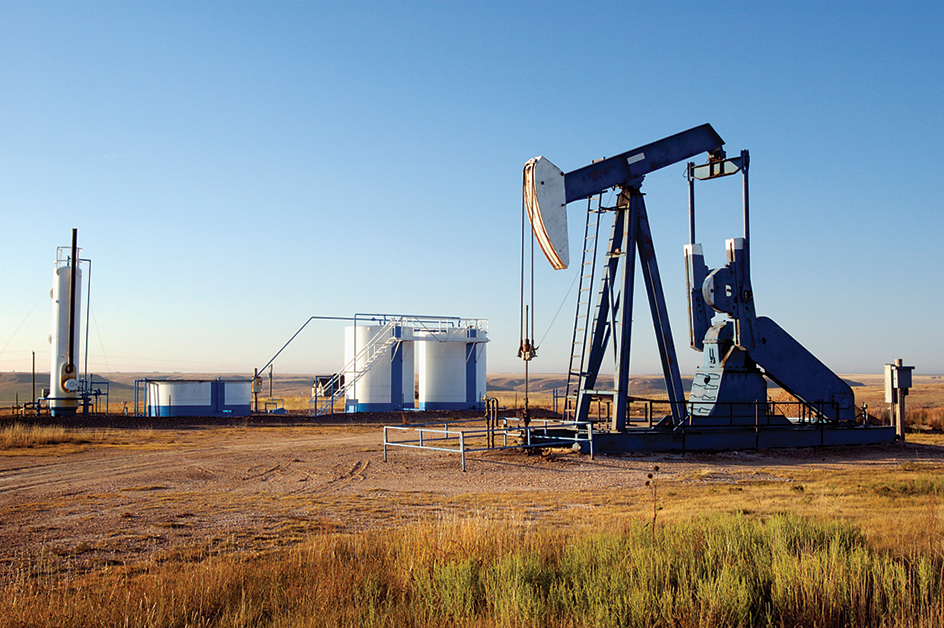
Texas leads the states in natural gas production. About a fourth of the natural gas produced in the United States comes from Texas. Most of the natural gas is extracted from the Dallas area, the Panhandle, and the southern part of the state. Some of the state’s gas is obtained as a by-product of petroleum mining.
Among other mined products, cement, coal, crushed stone, lime, salt, and sand and gravel provide the most income. Texas is among the leading states in the production of all of these mined products. Limestone quarries provide most of Texas’s cement, crushed stone, and lime. The largest limestone quarries lie near the major cities. Coal comes from surface mines in the eastern part of the state. Most of the salt production in Texas occurs in the Houston area. Sand and gravel are dredged from riverbeds and dug from pits.
Agriculture.
Texas has far more farms than any other state. Ranches and farms cover about three-fourths of the state. Large areas of irrigated cropland lie in the Panhandle and in the lower Rio Grande Valley.
Livestock products.
Beef cattle are Texas’s largest source of farm income. Most Texas winters are so mild that cattle can graze outdoors all year around. As a result, Texans can raise cattle more cheaply than northern farmers can. Texas leads the states in number of beef cattle. Central and western Texas have the most cattle ranches. During the late 1800’s, ranchers raised large herds of a breed called Texas longhorns. This breed was gradually replaced by such breeds as Herefords and Aberdeen-Angus. Today, Texas longhorns are used mainly for crossbreeding purposes and to produce low-fat beef. See Cattle (American cattle).
The northwestern part of the state is the leading dairy farming area. Eastern Texas has many chicken and egg farms. Texas ranks as a leading state for producing broilers (young, tender chickens). The Panhandle has most of Texas’s hog farms. Texas has more sheep than any other state. It is a leader in wool production. The Edwards Plateau of west-central Texas is the leading sheep-raising area in the country. Texas leads the United States in the production of mohair from angora goats.
Field crops.
Cotton is Texas’s leading field crop. Texas produces more cotton than any other state. Texas cotton thrives on the coastal plain and in the Great Plains region. Irrigated cotton grows in the Rio Grande Valley. Jared Groce, who is sometimes called the Father of Texas Agriculture, and other early settlers introduced commercial cotton growing. They planted cotton in the fertile valley of the Brazos River during the early 1820’s.
Texas farmers also grow corn, grain sorghum, hay, peanuts, rice, and wheat. Corn grows mainly in the Panhandle and in the Prairie Plains region. Most of the grain sorghum comes from the Panhandle and South Texas. Texas is a leading state for growing grain sorghum and hay. Farmers in the southwestern part of the Panhandle grow peanuts. Texas is one of the few states that raises large amounts of rice. Rice is grown along the eastern Gulf Coast. Northern Texas has most of the wheat farms.
Greenhouse and nursery products
are the leading source of agricultural income in the state’s urban areas. Texas ranks among the top states in annual income from greenhouse and nursery products.
Fruits, vegetables, and nuts.
The lower Rio Grande Valley is one of the leading areas of the United States for growing fruits and vegetables. Temperatures in the valley usually remain warm during winter, so crops can be grown the year around. The production of citrus fruits, such as grapefruits and oranges, and melons, such as cantaloupes and honeydews, is important in the lower Rio Grande Valley.
Texas is among the leading states in the production of nuts. Pecans are the most important nuts harvested in the state. Pecan trees grow along rivers and streams throughout most of the state.
Fishing industry.
Texas ranks among the leading states in the production of oysters and shrimp. The state’s fish catch also includes Atlantic croaker, black drum, crab, grouper, and red snapper. Texas also produces farm-raised catfish.
Electric power and utilities.
Texas ranks first in the nation in electric power production. Plants that burn natural gas or coal provide much of the state’s power. Most of the remaining power is generated by nuclear plants and from wind power.
Transportation.
Several famous trails crossed the Texas wilderness in the early days. During the period of Spanish rule, many of these trails served as routes for missionaries and explorers. The first railroad in Texas was built between Harrisburg (now part of Houston) and Richmond in 1852 and 1853. Today, railroad lines provide freight service in Texas.
The Dallas-Fort Worth and Houston areas each have two major airports. Other large airports in Texas are in Austin, El Paso, and San Antonio.
Texas has an extensive system of roads and highways. Thousands of miles of the interstate highway system cross Texas. Eight U.S. highways in Texas connect with roads in Mexico.
Texas has deepwater ports along the Gulf of Mexico. Houston is the busiest port. Much cargo shipped to Houston is then transported by truck to Mexico. The state’s other deepwater ports include Beaumont, Corpus Christi, Freeport, Port Arthur, and Texas City. Shallow ports also lie along the coast. They handle barges, fishing vessels, and other shallow-draft vessels. 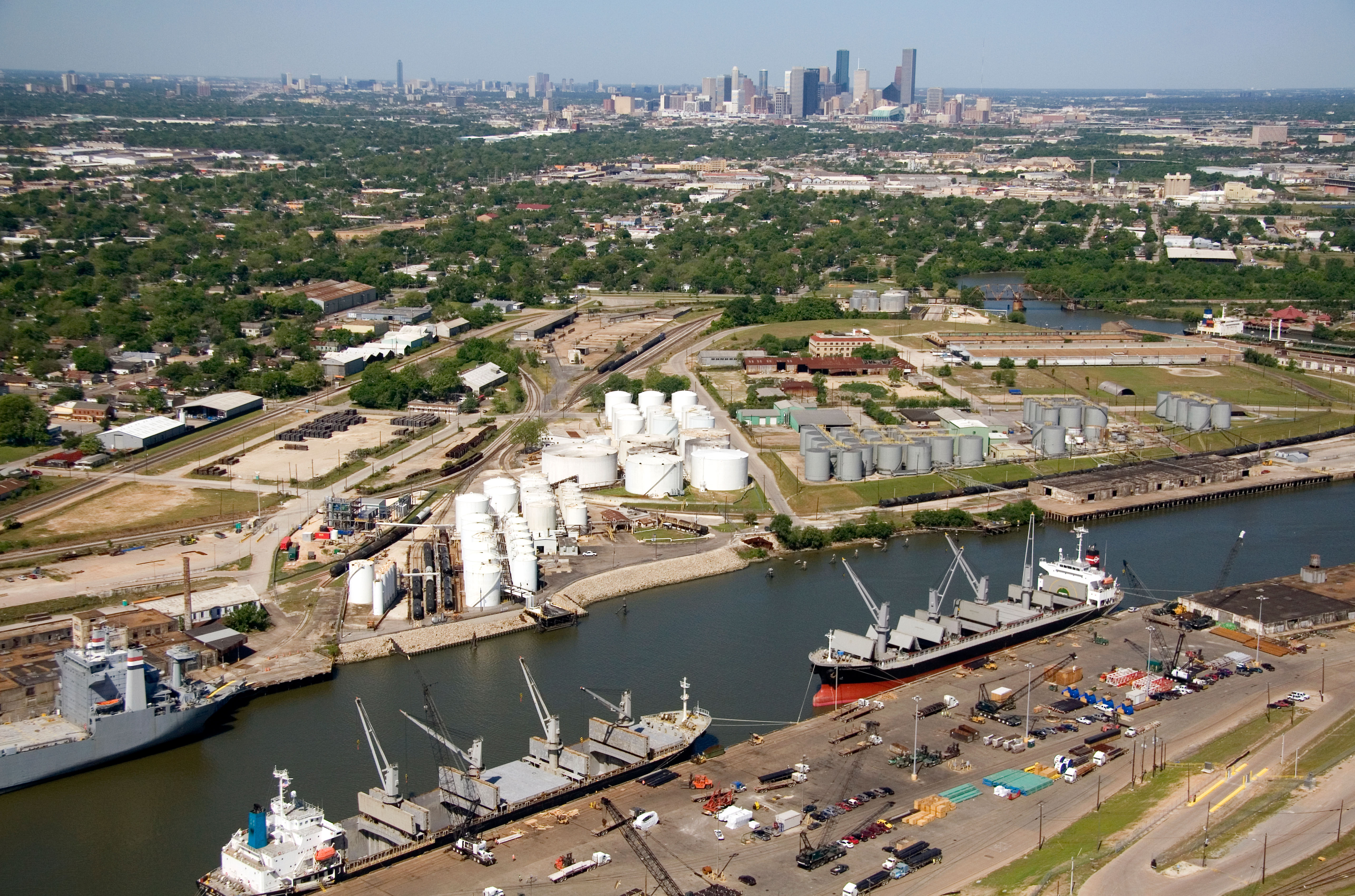
The Gulf Intracoastal Waterway runs the length of the Texas coast between Brownsville and Orange. This waterway is used by boats from the state’s shallow ports. The Gulf Intracoastal Waterway connects with the Mississippi River at New Orleans. See Gulf Intracoastal Waterway.
Communication.
José Álvarez de Toledo, a Mexican, printed Texas’s first newspaper, Gaceta de Texas, in Nacogdoches in 1813.
Today, Texas newspapers with the largest circulations include the Austin American-Statesman, The Dallas Morning News, the El Paso Times, the Fort Worth Star-Telegram, the Houston Chronicle, and the San Antonio Express-News.
Government
Constitution
of Texas was adopted in 1876. The state had four earlier constitutions—those adopted in 1845, 1861, 1866, and 1869. An amendment to the Constitution must first be approved by two-thirds of the members of each house of the state Legislature. Then, the amendment must get the approval of a majority of the voters in a statewide election.

Executive.
The governor of Texas holds office for a four-year term. He or she can serve an unlimited number of terms. The governor has the power to appoint two of the top state officials—the secretary of state and the adjutant general. All other state officials are elected, most to four-year terms. They include the lieutenant governor, attorney general, commissioner of agriculture, commissioner of the Texas General Land Office, and comptroller.
The voters also elect the three members of the Railroad Commission of Texas. This group controls the state’s petroleum production by deciding how much oil the Texas petroleum industry can pump each year.
Legislature
consists of a Senate of 31 members and a House of Representatives of 150 members. Voters in each of the 31 senatorial districts elect one senator to a four-year term. Voters in each of the 150 representative districts elect one member of the House of Representatives to a two-year term. Both houses meet in odd-numbered years on the second Tuesday in January. By law, regular sessions are limited to 140 calendar days. Special legislative sessions can last only 30 days. 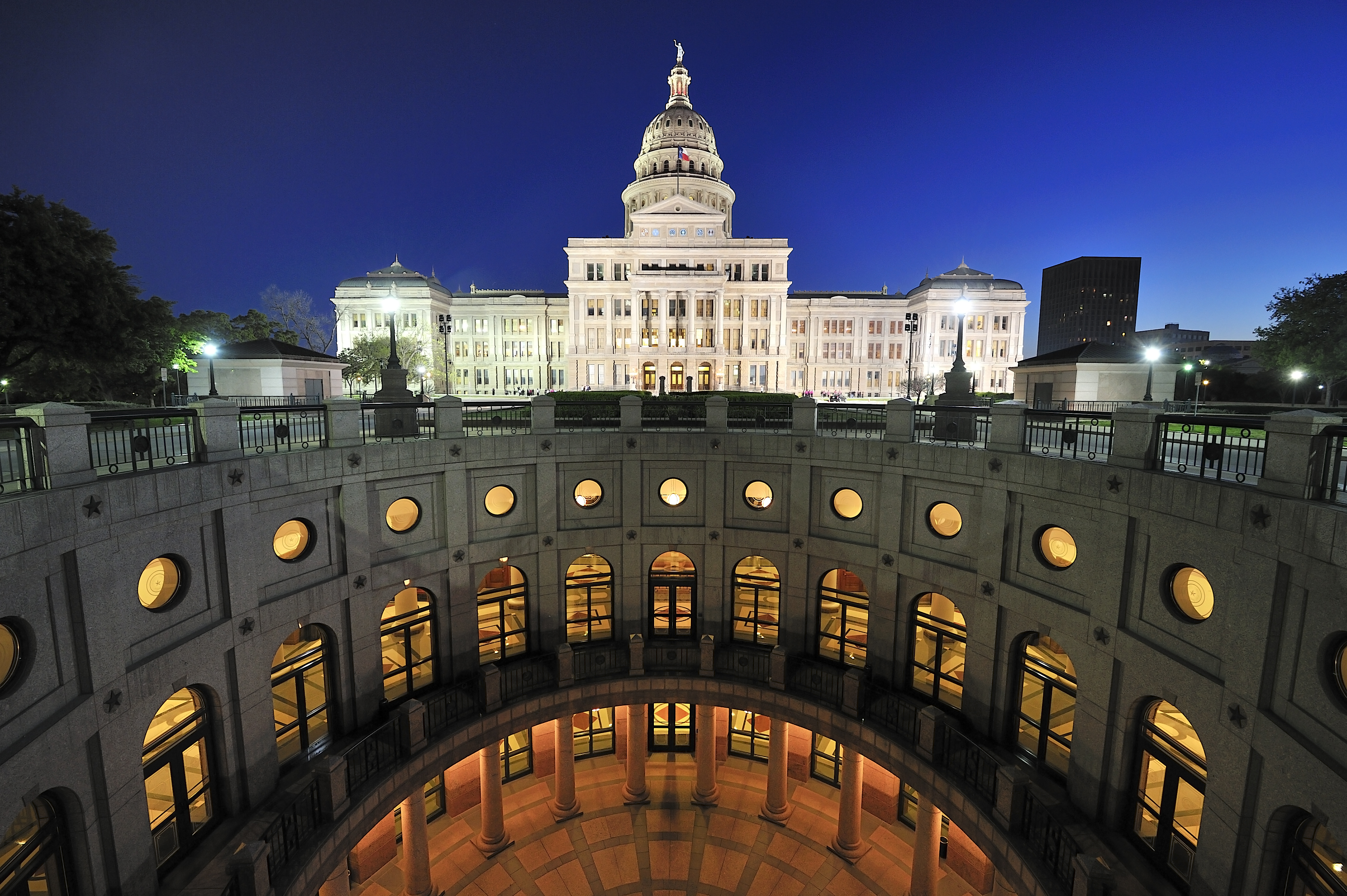
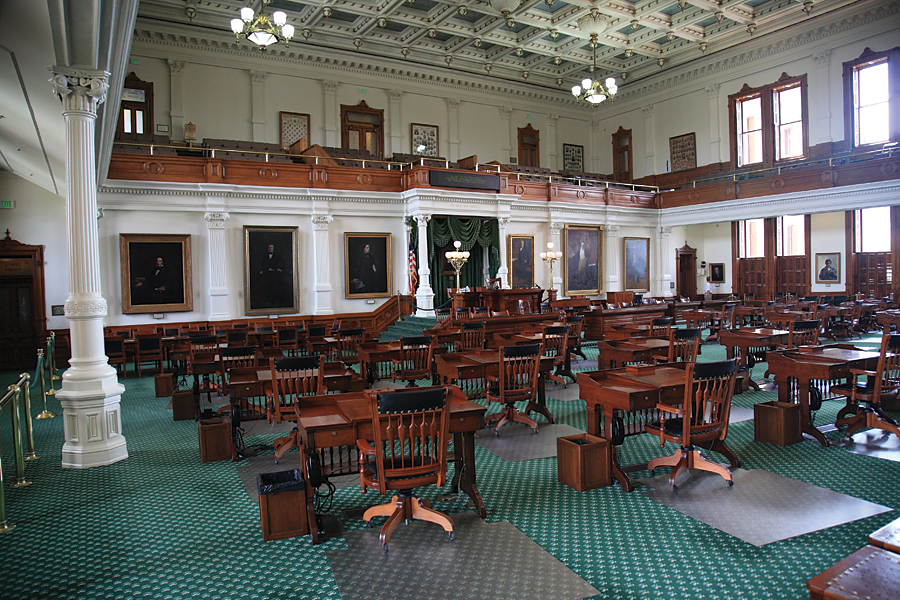
Courts.
The highest civil court in Texas is the Supreme Court. It has a chief justice and eight justices. The highest criminal court is the Court of Criminal Appeals. It has nine judges, including a presiding judge. Members of both courts are elected to six-year terms.
Texas has 14 courts of appeals. Each of these courts has a chief justice and a number of justices. The number of associate justices varies from 2 to 12. All justices for the courts of appeals are elected for six-year terms.
The chief trial courts are the District Courts. The voters of each judicial district elect a district judge to a four-year term. Other trial courts include the county, municipal, justice of the peace, and criminal district courts. The voters elect judges of all these courts, except municipal courts, to four-year terms. Most municipal court judges are appointed to two-year terms.
Local government.
Texas has 254 counties—more than any other state. Each one is governed by a county commissioners court. The court is made up of the county judge and four commissioners. This court performs such administrative duties as adopting the county budget and setting the county tax rate. County judges are elected to four-year terms. The commissioners are elected to four-year terms from each of four commissioner precincts in a county. Other county officials include the county attorney, the sheriff, the tax assessor-collector, and the treasurer.
Texas has more than 1,200 incorporated cities, towns, and villages. About 350 cities have home rule. That is, they have adopted their own city charters. The Texas Constitution permits all cities with populations of more than 5,000 to adopt home rule. A large majority of home-rule cities use either the council-manager or the commission-manager form of government. All other home-rule cities use the mayor-council system of government. Towns with populations of 5,000 or fewer are incorporated under general law.
Revenue.
Taxes bring in about two-fifths of the state’s general revenue (income). Most of the remaining revenue comes from federal grants and other U.S. government programs, and from charges for government services. A retail sales tax on all items except food and medicine is the largest source of tax revenue. Other large sources of tax revenue include a corporation-franchise tax, a motor fuel use tax, and a tax on petroleum and natural gas production. Texas does not collect individual or corporate income taxes.
Politics.
The Democratic Party controlled Texas politics throughout most of the state’s history. But in the 1970’s, the Republican Party began gaining strength. In 1978, Bill Clements became the first Republican to be elected governor since 1869. In 1998, George W. Bush, son of former President George H. W. Bush, became the first Republican governor to be elected to a second term. George W. Bush was elected president of the United States in 2000. Although neither Bush was born in Texas, two other U.S. presidents were born in the state. Dwight D. Eisenhower was born in Denison, and Lyndon B. Johnson was born near Stonewall. In every presidential election since 1980, Texas’s electoral votes have gone to the Republican candidate.
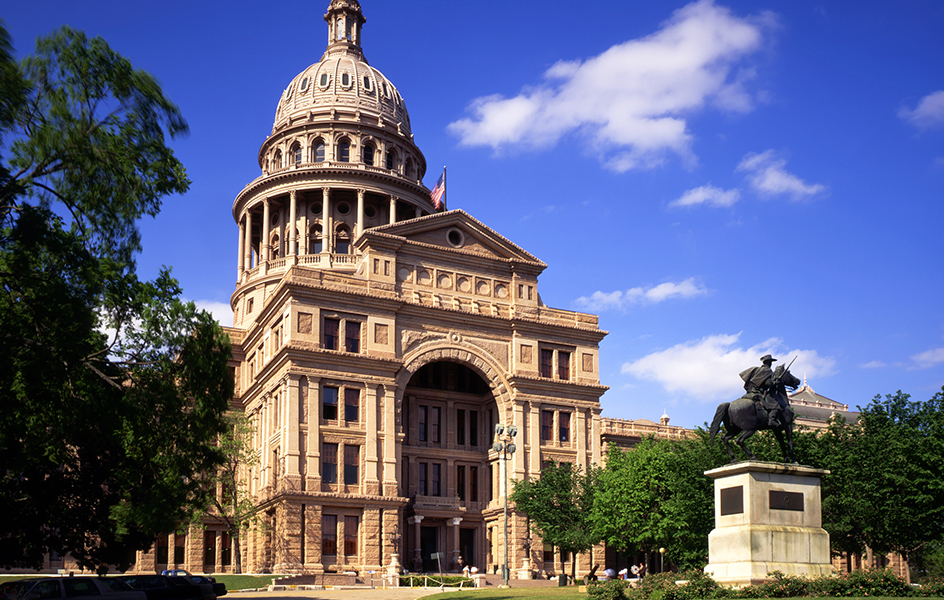
History
Early days.
When the first Europeans arrived, about 30,000 Indigenous Americans lived in what is now Texas. The largest Indigenous group was the Caddo, in the eastern part of the region. These people lived in permanent homes and were farmers. Some of the Caddo tribes formed a league called the Hasinai Confederacy. Tribes in the confederacy included the Nacogdoches, Nasoni, and Neche. The Arkokisa, Atakapa, Karankawa, and other smaller tribes lived along the coast. The Coahuiltecan people occupied south Texas. The Lipan Apache lived on the Edwards Plateau in the west. The Tonkawa roamed the Rolling Plains and the Prairie Plains.
Spanish exploration.
Spanish adventurers began exploring Texas during the early 1500’s. They came for “glory, God, and gold.” In 1519, the Spanish governor of Jamaica sent Alonso Álvarez de Pineda to explore the Gulf Coast from Florida to Mexico. Pineda mapped the coastline. Most historians believe he and his followers were the first Europeans in Texas. In 1528, members of a Spanish expedition reached the Texas coast. Álvar Núñez Cabeza de Vaca, a leader of the expedition, and three companions traveled among the Indigenous people. For eight years, they gradually made their way westward. They finally reached a Spanish settlement in Mexico near the Pacific Coast. The men brought to Mexico City stories of cities of great wealth that supposedly lay north of their westward route.
The Spaniards sent several expeditions to look for these golden cities, called the Seven Cities of Cíbola. In 1540, Francisco Vásquez de Coronado led a party north from Mexico. He passed through Texas in 1541. But Coronado found only the grass-house villages and the adobe dwellings of the Indigenous Plains and Pueblo peoples, respectively. In 1542, some members of an expedition originally led by Hernando de Soto entered northeast Texas after their leader died. They reached the vicinity of present-day Texarkana. Spain based its claims to Texas on these and other explorations, and on missions that Spanish friars built later. Franciscan missionaries built Texas’s first two missions in 1682. These missions were near the present site of El Paso.
French exploration
in Texas began in 1685. That year, René-Robert Cavelier, Sieur de La Salle, landed at Matagorda Bay. He had intended to establish a colony at the mouth of the Mississippi River. Perhaps a storm on the Gulf of Mexico drove him to Texas. La Salle established a settlement on the headwaters of Matagorda Bay. He made expeditions westward in search of gold and silver. One of La Salle’s men killed him in a quarrel in 1687. Disease and Indigenous warriors killed off the remaining settlers, and the warriors destroyed the outpost.
La Salle’s explorations in Texas alarmed the Spaniards. In 1689, an expedition led by Alonso de Léon set out from Mexico to destroy La Salle’s outpost. The party found the ruins of a fort. They then traveled eastward as far as the Neches River. In 1690, a Franciscan friar with De Léon’s expedition established the first mission in east Texas, San Francisco de los Tejas. It stood near the present-day community of Weches.
The mission period.
By 1731, Spain had sent more than 90 expeditions into what is now Texas. Spain also had established missions throughout central, east, and southwest Texas. The Spaniards built forts near some missions to protect them from Indigenous warriors. In 1718, they built a fort, later called San Antonio de Béxar, to guard the mission of San Antonio de Valero. The mission (later called the Alamo) and the fort stood on the site of San Antonio. Other missions were also built there. In 1772, San Antonio became the seat of Spanish government in Texas. Spanish colonization of Texas proceeded slowly. The region had only about 7,000 white settlers in 1793, after more than a hundred years of missionary effort.
President Thomas Jefferson of the United States purchased the Louisiana Territory from France in 1803. The United States then claimed all territory as far south as the Rio Grande on the basis of earlier French claims. In 1819, a treaty fixed the southwestern boundaries of the Louisiana Territory at the Sabine and Red rivers.
Mexico broke away from Spain in 1821. Texas became part of the new Empire of Mexico. Mexico became a republic in 1824.
American settlement.
In 1820, Moses Austin, a Missouri lead mine owner, asked Spanish officials in Mexico to let him establish a colony of Americans in Texas. The Spanish government granted his request, but Austin died before he could organize the colony. His son, Stephen F. Austin, carried out the plan. Austin brought 300 families to Texas. In 1821, Austin’s group made its first settlements along the lower reaches of the Brazos and Colorado rivers in southeast Texas. Austin arrived later and officially established the colony in 1822. It grew rapidly. In 1823, Austin laid out San Felipe de Austin in present-day Austin County as the colony’s seat of government. Mexico soon issued new land grants to Austin. He then extended the boundaries of his colony. 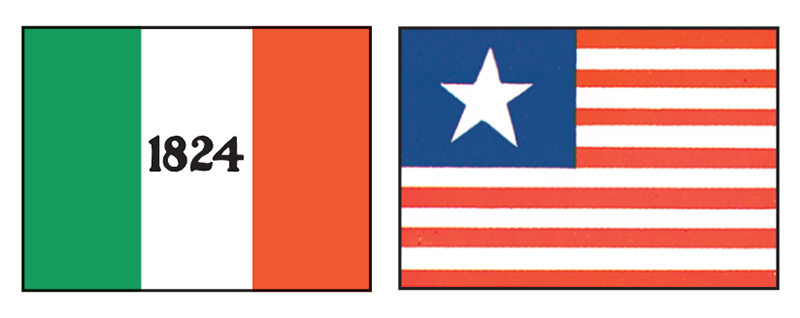
Other Americans also received land grants from Mexico to establish colonies. The Mexicans called such colonial organizers empresarios. American empresarios founded many colonies in Texas during the 1820’s. From 1821 to 1836, the number of settlers grew to between 25,000 and 30,000. Almost all were Americans.
Mexican officials became alarmed by the increasing number of settlers from the United States. In 1830, they attempted to halt American immigration to Texas. From then on, relations between the American settlers and Mexican officials grew steadily worse. In 1834, General Antonio López de Santa Anna, a Mexican politician and soldier, overthrew Mexico’s constitutional government. He made himself dictator. The next year, the American colonists in Texas revolted against Mexico. See Santa Anna, Antonio López de.
The Texas revolution.
After a few battles with Mexican soldiers, Texas leaders met at San Felipe de Austin on Nov. 3, 1835. They organized a temporary government. Texas troops, led by Colonel Benjamin Milam, attacked San Antonio. The Mexicans there surrendered on December 11. The fall of San Antonio alarmed Santa Anna. He assembled a large army and marched on San Antonio. Texan rebels in the city withdrew behind the walls of the Alamo, the Spanish mission originally called San Antonio de Valero. Santa Anna’s forces attacked the Alamo from Feb. 23 to March 6, 1836, when it finally fell. Some historians believe that all its defenders, including Jim Bowie, Davy Crockett, and William B. Travis, were killed in the battle. Other historians believe that a few men, perhaps including Crockett, survived the battle but were then executed by the Mexicans. Texas leaders met at Washington-on-the-Brazos on March 2. They issued a declaration of independence from Mexico. They chose David G. Burnet as temporary president and Sam Houston as commander of the army. See Alamo. 
After the fall of the Alamo, Santa Anna moved swiftly to put down the revolution. On his orders, more than 300 Texas prisoners who had surrendered were shot to death at Goliad on March 27. But the Texans continued to fight. They were inspired by the battle cries of “Remember the Alamo” and “Remember Goliad.” In April, after a long retreat, the smaller army of Sam Houston camped near Santa Anna’s forces. On April 21, the Texans took the overconfident Mexicans by surprise. They captured Santa Anna and crushed his army in the Battle of San Jacinto. The victory ended the war and guaranteed Texas independence. See San Jacinto, Battle of.
The Republic of Texas
faced problems. It had no money, and raiding Indigenous people and Mexicans threatened the Texans. In the new republic’s first national election, Texans chose Sam Houston as president. They also voted to join the United States. But the great powers of Europe, especially France and the United Kingdom, wanted Texas to remain independent. They feared the United States would gain control of the Southwest. The South wanted Texas to join the Union. But the North objected because Texas allowed slavery.
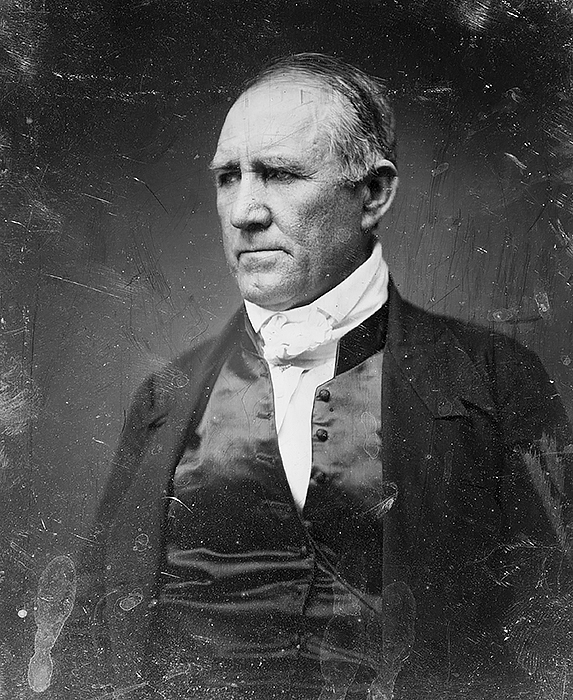
During the nearly 10 years when Texas was an independent republic, its population increased rapidly. Most of the people farmed for a living. In 1839, Texans passed the first homestead exemption act. Many states later adopted such laws. They prevented farms from being seized for payment of debts.
Statehood and early progress.
In 1844, the U.S. Senate defeated a treaty to annex Texas to the United States. The treaty failed to win the approval of two-thirds of the senators voting. Texas finally joined the Union on Dec. 29, 1845. It became the 28th state by a joint resolution of both houses of Congress. Passage of the resolution required the votes of only a majority of the members present in each house. 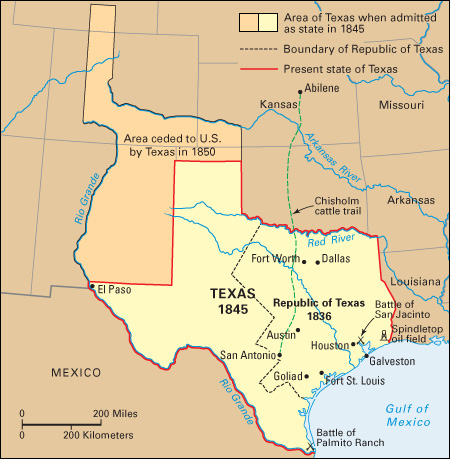
The statehood agreement provided that Texas could keep its public lands and that it would pay its own public debts. The federal government would settle all boundary disputes with other countries.
After Texas joined the Union, Mexico ended diplomatic relations with the United States. In 1846, President James K. Polk sent U.S. troops to the Rio Grande, deep into territory claimed by both Texas and Mexico. The move sparked hostilities between the United States and Mexico, leading to the Mexican War (1846-1848). Mexico surrendered in 1848. In the Treaty of Guadalupe Hidalgo, Mexico gave up all claims to Texas and other southwestern lands. See Guadalupe Hidalgo, Treaty of; Mexican War.
Texas claimed much of the southwestern region that Mexico turned over to the United States, including half of present-day New Mexico. In 1850, the federal government agreed to pay the state $10 million for its claims. The agreement also called for Texas to give up other claims against the federal government. Texas used part of this money to pay its public debts. Settlers continued to flock to the state. During the 1850’s, Texas organized 89 new counties. Northeast Texas and the region east of Waco and Fort Worth attracted the largest number of settlers.
The Civil War and Reconstruction.
Texas seceded (withdrew) from the Union in February 1861. The state seceded in spite of strong Union feeling in some sections of Texas. Governor Sam Houston refused to take an oath to support the constitution of the Confederate States. As a result, he was put out of office. In March 1861, Texas joined the Confederate States of America. More than 50,000 Texans fought for the Confederacy during the American Civil War (1861-1865). Texas also furnished the Confederacy with supplies. The Union navy blockaded the Texas coast and occupied Galveston for a short time. The last battle of the Civil War was fought at Palmito Ranch, near the mouth of the Rio Grande, on May 13, 1865. The soldiers had not heard that the war ended on April 9.
After the war, Texas underwent the same process of Reconstruction as other Southern states. In 1866, a prosecessionist government was elected. But in 1870, after African Americans gained the right to vote, the Republican Party came to power. Texas was readmitted to the Union. Lawlessness gripped the state as racial violence broke out. The Ku Klux Klan became powerful. The Republicans under Governor Edmund J. Davis sought to protect the rights of Black people, curb lawlessness, and create a system of public education. But Reconstruction ended in the state when Democrat Richard Coke became governor in 1874.
Conquering the frontier.
Drillers first discovered oil in Texas near Nacogdoches in 1866. In the mid-1860’s, Texans began driving cattle along trails to railroad centers in Kansas and Missouri. These trail drives continued during the 1870’s and 1880’s. Indigenous raiders slowed the settlement of the western part of the state. The raiders were subdued by 1880. Cattle ranchers began to occupy the Panhandle and the western plains. Railroads crossed Texas in the 1880’s, ending the cattle drives and aiding settlement. Pioneers followed the railroads west and began farming the western regions of the state. The Texas Rangers, organized in 1835, helped protect the far western settlers from bandits, such as Sam Bass. During the 1890’s, under the leadership of Governor James S. Hogg, the state Legislature enacted progressive reforms. These reforms included the creation of the Texas Railroad Commission to prevent price fixing and other abuses by the railroads. 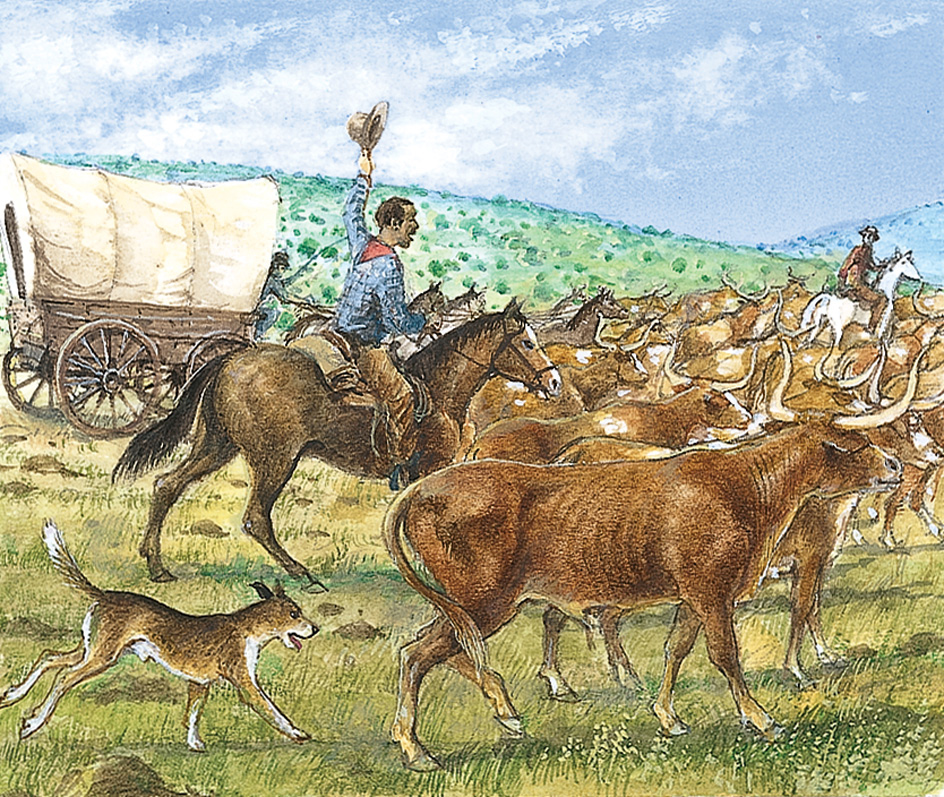
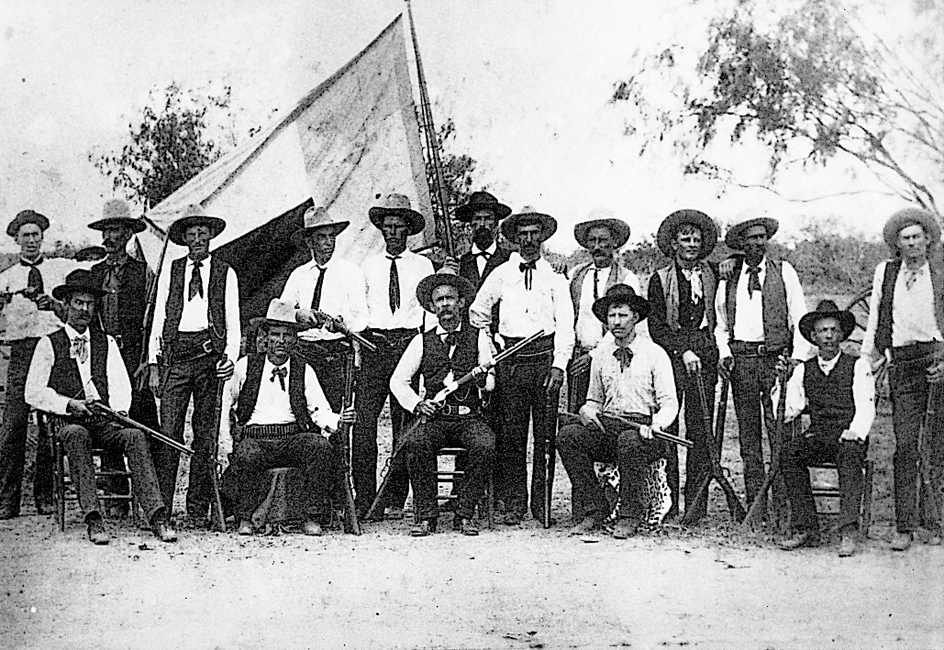
The early 1900’s.
Between 1900 and 1920, Texas increased its railroad mileage and built a road system. The state also developed irrigation and farming on land previously used for raising livestock. A major disaster occurred in Texas in 1900, when a hurricane struck Galveston. The storm resulted in about 6,000 deaths. A tornado that struck the Goliad area killed more than 100 people in 1902.
The state’s great oil and gas industries began in 1901 with the discovery of the Spindletop oil field near Beaumont. Large-scale production began with the opening of the Spindletop field. For several years, the Spindletop and other Gulf Coast fields formed the center of the Texas oil industry. Later, large fields were opened in the Panhandle, the Pecos Valley, and east, north, and south Texas. Drillers made the state’s greatest petroleum discovery in 1930, when they found the famous East Texas oil field near Kilgore. To develop the mineral resources, Texans built refineries and other manufacturing plants. They deepened coastal harbors to help ship their oil and other products. The annual value of manufactured goods more than doubled between 1900 and 1910. 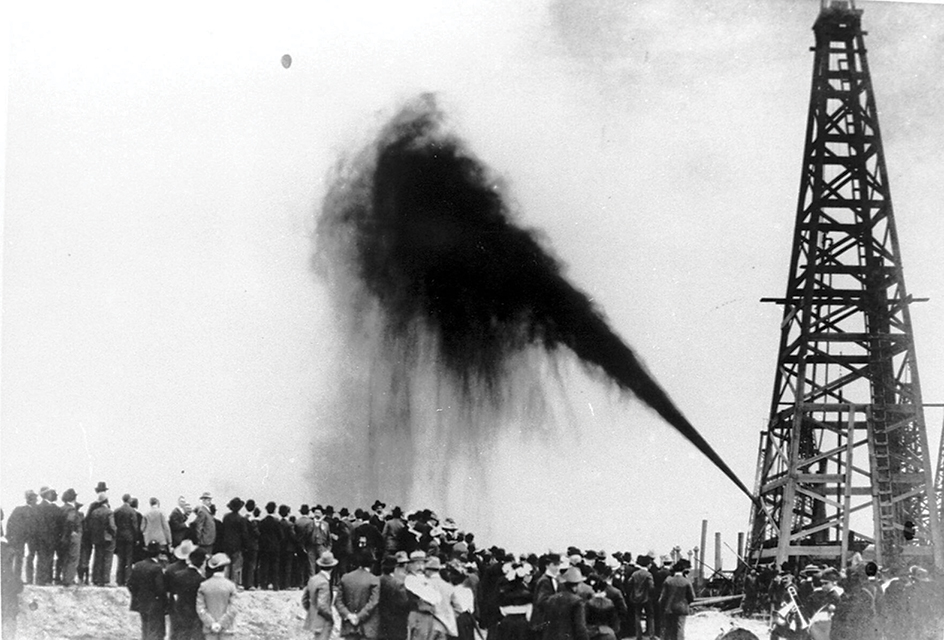
Between 1900 and 1920, many Texans became city workers. The number of cities and towns doubled. By 1920, a third of the people in Texas lived in cities. After the United States entered World War I in 1917, the federal government set up military training camps in Texas.
In the early 1920’s, Governor Pat M. Neff improved education and prisons. He also led the push for a state park system. In 1925, Texas became the second state, after Wyoming, to have a woman governor. She was Miriam A. “Ma” Ferguson. Her husband, James E. Ferguson, had previously been governor.
Great highway construction took place in Texas during the 1920’s and 1930’s. New legislation, and the discovery of new oil fields, helped ease hardships caused by the Great Depression and the droughts of the 1930’s. The new legislation included the establishment of old-age pensions and special relief programs. In 1936, the Texas Centennial Exposition at Dallas celebrated a hundred years of independence.
The mid-1900’s.
During World War II (1939-1945), over a million servicemen trained in Texas. Lieutenant Audie Murphy was born in Kingston. He became the most decorated U.S. soldier of the war.
After the war, manufacturing expanded rapidly in Texas. The aerospace, chemical, and electronics industries built many facilities in the state. Thousands of Texans moved from rural areas to cities to find jobs in new factories. The state began to shift from a rural, farm economy to an urban, industrial economy.
Texas suffered one of its greatest disasters on April 16, 1947. A French ship loaded with chemicals blew up in the harbor at Texas City. The explosion of the ship triggered further explosions and fires. More than 500 people died. In 1953, the state suffered one of its worst weather-related disasters when a tornado killed 114 people in the Waco area.
In 1950, the Supreme Court of the United States ruled that Texas had lost ownership of its oil-rich tidelands (submerged offshore lands) when it entered the Union in 1845. The ruling meant that the U.S. government owned the oil beneath the tidewaters. But in 1953, the U.S. government restored the tidelands to Texas.
Like many other states, Texas faced racial problems in the 1950’s and 1960’s. The state had separate public schools for Black and white students. In 1954, the Supreme Court of the United States ruled that compulsory segregation in public schools was unconstitutional. By the late 1960’s, most school districts in Texas had been integrated.
Texas took a leading role in the U.S. space program during the 1960’s. In 1962, the National Aeronautics and Space Administration (NASA) began building a Manned Spacecraft Center near Houston. The center became the headquarters of the U.S. piloted spacecraft program in 1964. In 1969, scientists and engineers at the center directed the Apollo 11 flight, in which astronauts made the first landing on the moon.
Texas also gained in national political importance in the mid-1900’s. Sam Rayburn of Texas became one of the nation’s most influential leaders. He was speaker of the U.S. House of Representatives for almost 17 years between 1940 and 1961. In 1963, Lyndon B. Johnson of Texas became the first Southern U.S. president since the Civil War. Johnson became president on Nov. 22, 1963, after an assassin had killed President John F. Kennedy and wounded Texas Governor John B. Connally in Dallas. Vice President Johnson was sworn in as the 36th president aboard the presidential plane at Love Field in Dallas. Lee Harvey Oswald was accused of shooting President Kennedy. Two days after Kennedy’s death, Jack Ruby, a Dallas nightclub owner, killed Oswald.
The late 1900’s.
Texas continued to experience industrial expansion and population growth in the last decades of the 1900’s. By 1970, about four-fifths of the people in Texas lived in urban areas. More Texans worked in manufacturing than in farming and mining combined. The Manned Spacecraft Center was renamed the Lyndon B. Johnson Space Center in 1973. It made southeastern Texas a major center for space research. Corporations began designing and testing space equipment there. Universities conducted research in space medicine and other fields.
During the mid-1980’s, the state’s economy was deeply hurt by a sharp decline in oil and natural gas prices. This decline emphasized the need to attract new types of industries to the state and to find new sources of tax revenue. In 1986, lawmakers raised the state sales tax and cut the budgets for health, welfare, and higher education. Economic improvements in the late 1980’s and into the 1990’s led to a recovery of the state’s economy. The North American Free Trade Agreement (NAFTA) took effect in 1994. It led to economic development in Texas, particularly along the Mexican border. The United States-Mexico-Canada Agreement replaced NAFTA in 2020.
Recent developments.
The growth of Texas’s economy and population continued into the 2000’s. Millions of newcomers moved to Texas from California and other states. The space shuttle program ended in 2011, but NASA continued to be a major employer in the state.
Texas Governor George W. Bush was elected as the 43rd president of the United States in 2000. Bush resigned as governor after being elected president. Lieutenant Governor Rick Perry became Texas’s new governor. In 2008, an arson fire heavily damaged the Texas Governor’s Mansion. The state raised $26 million to restore the historic Austin building, which was built during the 1850’s.
Natural disasters.
Hurricanes and other storms severely affected many Texans in the 2000’s. In 2008, Hurricane Ike caused flooding and billions of dollars in property damage on the Texas coast and in Houston. In 2015, storms brought heavy flooding to Austin, Houston, and other parts of Texas. About 30 Texans were killed, and thousands of homes were damaged or destroyed. In 2017, Hurricane Harvey struck southeastern Texas. The storm caused severe flooding, major property damage, and widespread power outages. 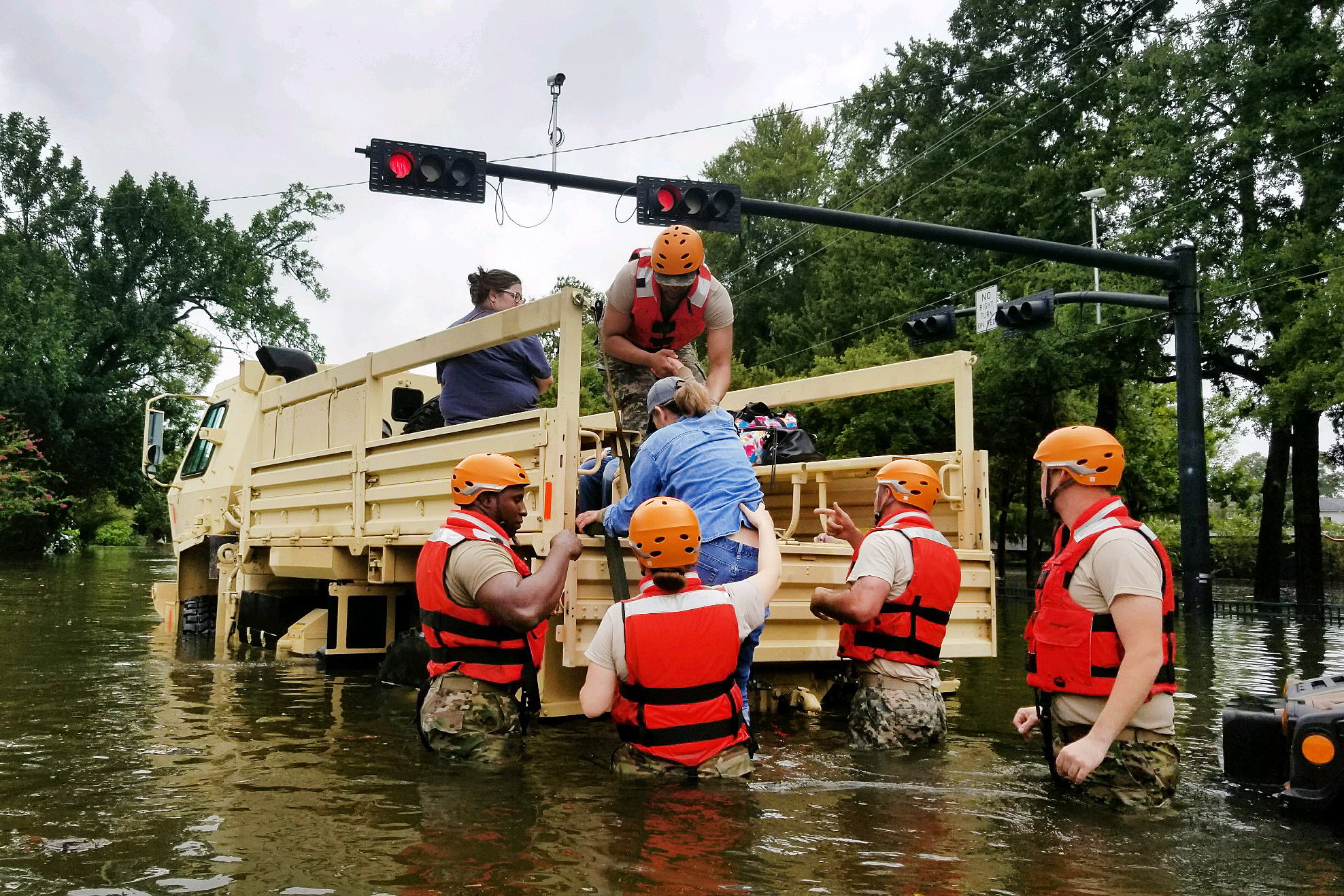
In 2009, Texas officials said that a drought that had begun in late 2007 was the state’s worst in more than 90 years. The drought, which was most severe in central and southern Texas, especially hurt cattle ranchers. Another historic drought struck in 2011. Severe droughts occurred regularly later in the 2010’s and into the 2020’s.
Explosion.
On April 17, 2013, a fire and explosion at a fertilizer plant in the town of West, Texas, killed 15 people and wounded 260. Most of the people killed were volunteer firefighters. Many homes and other buildings were destroyed. Investigators later determined that the fire had been set intentionally.
Mass shootings.
Some of the worst mass shootings in U.S. history took place in Texas in the 2000’s. In July 2016, a gunman shot 12 police officers, killing 5, at what had been a peaceful protest march in Dallas. The shooting occurred at a rally protesting shootings of African American men by police. In November 2017, a gunman fired upon the congregation of a Baptist church in Sutherland Springs. He killed 26 people and wounded about 20 others. In August 2019, a gunman who had professed hatred for immigrants shot more than 40 people, killing 22, at a store in El Paso. In May 2022, a gunman entered an elementary school in Uvalde and killed 19 students and 2 teachers.
